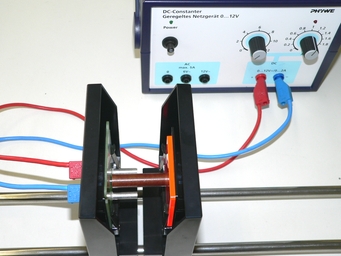Principle
For carrying out this experiment the room should be rather dark, particularly for the part where the spectrum is viewed through the grating. It is important not to look directly from the front into the light cone. If you have a problem seeing a colour there is the further option of slightly increasing the distance between the fluorescent screen and the tube and viewing the colour of the light spot on the screen. In this case only that part is reflected which does not contribute to the fluorescence.
Benefits
- Specified for the requirements of the german final secondary-school examinations
- Especially for secondary schools
- Quantum and wave optics in a student experiment
Tasks
Bei diesem Versuch wird die Anzahl der absorbierenden Schichten (Graufilter) verändert und die Lichtintensität gemessen. Als Ergebnis erarbeiten Sie in diesem Experiment eine Formel für die Abnahme der Intensität in Abhängigkeit der Schichtdicke, durch die das Licht geht. Anmerkung: Die Variation der Anzahl der Graufilter kann als Änderung der Dicke eines einzelnen Körpers aufgefasst werden.




